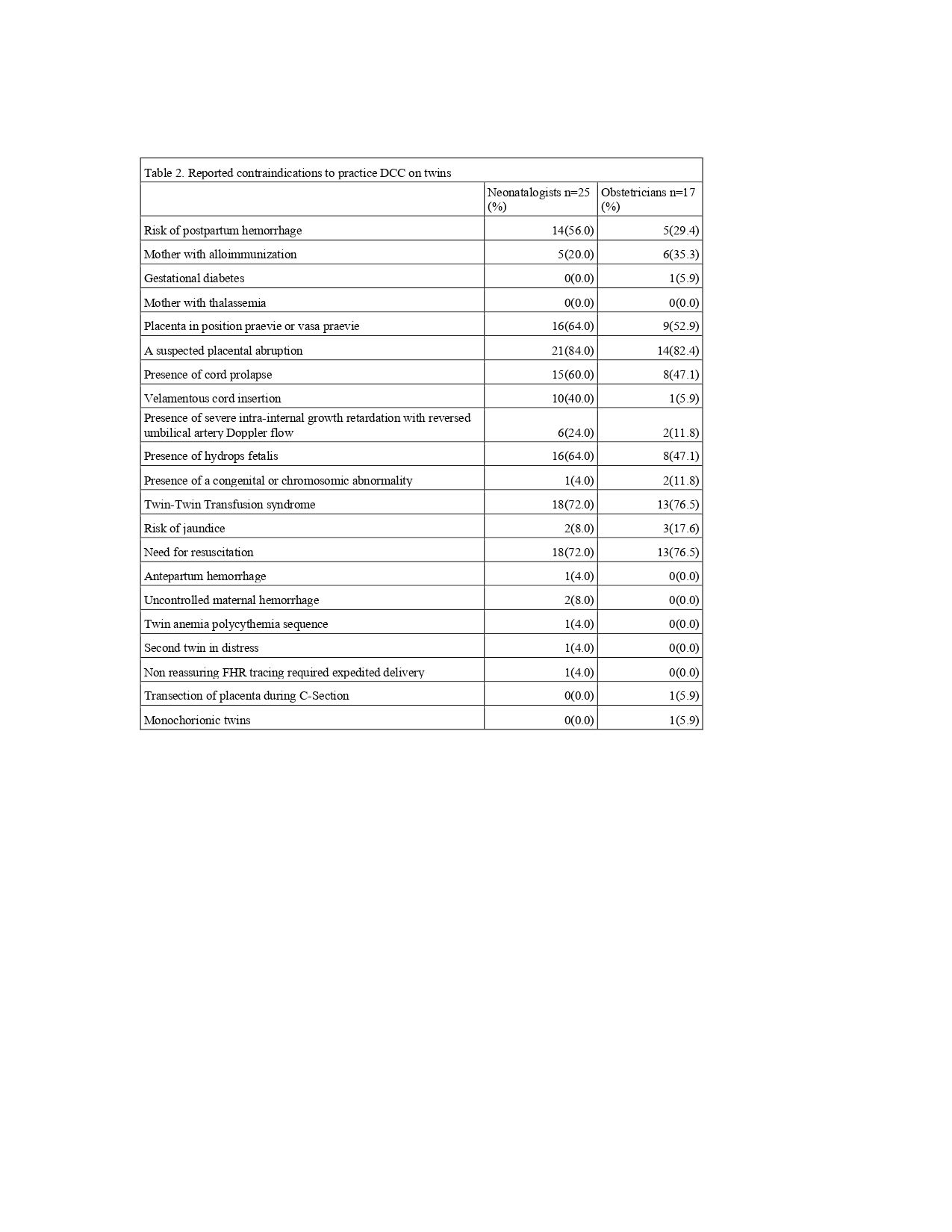Neonatology
Session: Neonatal General 2: NICU Care Strategies
68 - Deferred Cord Clamping in Twin Pregnancies across Canada: A National Survey of practices
Friday, May 3, 2024
5:15 PM - 7:15 PM ET
Poster Number: 68
Publication Number: 68.260
Publication Number: 68.260
- NB
Naila Bouadi (she/her/hers)
Medical Student
Laval University
Montréal, Quebec, Canada
Presenting Author(s)
Background: Guidelines recommending deferred cord clamping ([DCC], the delay of cord clamping for at least 30 seconds after birth) in preterm infants have evolved significantly with strong evidence of benefits in singleton births. However, there is a low level of evidence for DCC in twins due to the small number of twins in trials, potentially leading to variations in practice.
Objective: To assess the prevalent DCC practices in twin pregnancies across tertiary hospitals in Canada, and to uncover the diversity in application and adherence to protocols.
Design/Methods: A comprehensive Web-based survey distributed to neonatologists and obstetrician investigators of the Canadian Neonatal and Preterm Birth Networks (CNN/CPTBN) that have a maternity and neonatal unit.
Results: Overall site response rate was 93% (28/30 sites) with a response rate of 83% (25/30) for neonatologists and 56% (17/30) for obstetricians. The majority (obstetricians 13/17, neonatologists 21/25) reported having a local protocol that included twin pregnancies. Further, 70 % of neonatologists and obstetricians reported local practices of DCC for 40 to 60 seconds. Although all participating centers reported practicing DCC in dichorionic-diamniotic twins, a difference was observed for monochorionic-diamniotic twins. 56% of neonatologists declared they practice DCC in monochorionic-diamniotic twins whereas 65% of obstetricians reported this. During Cesarean delivery, most obstetricians stated that they place the firstborn on the mother’s thighs (76.5%). However, reported practices varied among neonatologists (placing the baby on the mother’s abdomen (32%), on the mother’s thighs (32%), and holding the baby at the height of the perineum (28%)). Divergent opinions were also noted regarding contraindications to holding it at the height of the perineum (DCC in twin pregnancies: risk of postpartum hemorrhage, velamentous cord insertion, and presence of severe intrauterine growth restriction with reversed umbilical artery doppler flow).
Conclusion(s): The study elucidates that DCC is a prevalent practice in twin deliveries within the Canadian Neonatal and Preterm Birth Networks. Despite, there are wide variations in practice, especially with respect to the characteristics of the twins in which DCC is performed and its technique. Future research should investigate optimal cord clamping management in twins.


